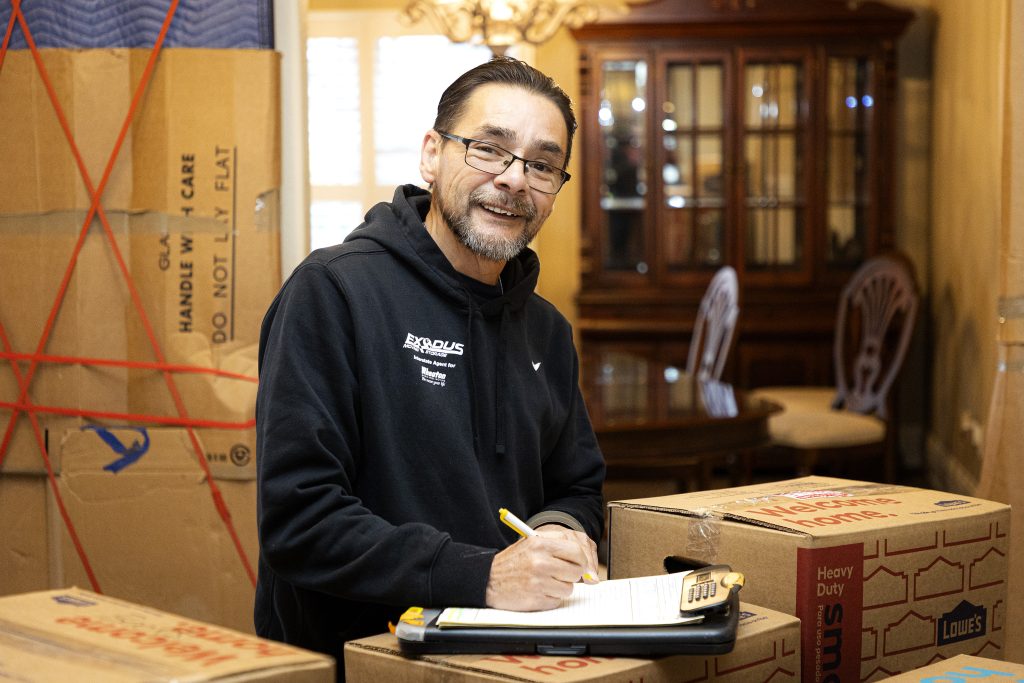
If you’ve ever searched online for a “storage unit size guide,” you’ve likely come across charts offering generic square footage estimates. While these can be helpful in theory, they rarely account for the real-life complexity of moving and storing your belongings. At Exodus Moving & Storage, we believe storage decisions should be rooted in your unique situation—your timeline, your home, your life transition.
That’s why our Move Consultants play a central role in helping you determine how much space you actually need. They don’t just estimate square footage—they provide thoughtful guidance, tailored solutions, and honest recommendations based on more than 28 years of moving and storage experience across Colorado.
This guide offers general storage guidelines by room, but more importantly, it will help you understand why working with a professional is the best way to make the right call.
Why Storage Needs Are Never One-Size-Fits-All
Many people approach storage with the assumption that there’s a universal solution. But in reality, storage requirements vary dramatically depending on life circumstances.
If you’re in the middle of a delayed home closing, planning a long-distance move, downsizing after retirement, or managing an estate after the loss of a loved one, your storage needs will reflect those specific complexities. Some customers require short-term space while staging a home, while others may need secure, long-term storage while navigating life abroad or waiting on a construction project to finish.
Even seemingly similar households can have dramatically different needs based on how much furniture they own, the number of sentimental items they plan to keep, and how well their belongings are packed. That’s why our Move Consultants begin every conversation with one simple question: How can we help?
Room-by-Room Storage Guidelines to Help You Estimate
While there’s no substitute for expert guidance, having a basic sense of how much space each room in your home might require can be a helpful starting point.
Bedroom Storage
Bedrooms typically require more space than people expect, especially if you’re storing full furniture sets. A queen or king-size bed, even when disassembled, can take up significant room alongside dressers, nightstands, wardrobes, and boxes of clothing or personal items. On average, a primary bedroom can occupy nearly half of a standard 10×10 storage unit.
Living Room Storage
Living room items are often the most difficult to pack efficiently. Sectional sofas, entertainment centers, coffee tables, and bookshelves tend to be bulky, and they don’t always stack well. Fragile decorative pieces may also require extra padding and custom crating, which means your storage plan should account for space and protection.
Kitchen and Dining Areas
Tables and chairs, while common, can be space hogs. Add in the breakables—glassware, china, cookware—and you’re looking at an area that demands both room and care. Unlike linens or clothes, kitchen items require extra cushioning and strategic packing to prevent damage. That additional care often translates into more cubic feet than expected.
Garage and Utility Storage
The garage is often overlooked during moving day planning, but its contents can be surprisingly bulky. Items like bikes, yard tools, totes, ladders, and seasonal gear come in awkward shapes and sizes. These pieces typically require creative stacking—or better yet, dedicated shelving within the unit to maximize space and accessibility.
Sentimental and Seasonal Items
Holiday decorations, photo albums, inherited furniture, and childhood memorabilia often come into the picture late in the moving process. But they deserve intentional storage just like everything else. These pieces may not take up much room individually, but collectively they add up. More importantly, they often require climate-controlled environments or added security.
Why a Move Consultant Makes All the Difference
Even with room-by-room estimates, it’s difficult to confidently decide what storage size will work best without professional insight. Your moving timeline, the condition and fragility of your belongings, and your access needs all play a part. On top of that, the type of storage matters.
At Exodus, we offer a load once/store/unload once model that’s ideal for reducing the risk of damage and minimizing handling. Unlike typical self-storage facilities, our system is designed for efficiency and protection—particularly helpful for customers experiencing life transitions, managing multiple delivery points, or coordinating long-distance moves.
Our Move Consultants are trained to evaluate not just what you’re storing, but how your move fits into the larger picture. They’ll walk you through:
- What unit size (or combination of units) makes sense
- Whether you’d benefit more from mobile storage or warehouse space
- How long-term storage needs may affect pricing and packing
- What access options are available during your storage term
Rather than leave you guessing, they create a tailored plan that fits your move, timeline, and budget.
Make Your Storage Plan with Confidence
Storage isn’t just about square footage. It’s about safeguarding what matters during a time of change. Whether you’re moving across town or across the country, storing a full household or just clearing space for renovations, our team brings clarity and peace of mind to the process.
At Exodus Moving & Storage, we’ve helped thousands of Colorado families and businesses navigate moving with integrity, reliability, and care. We’re not a national chain. We’re your local team, based right here in Northern Colorado, offering custom storage solutions that reflect your real needs.
More importantly, we don’t believe in one-size-fits-all service. We believe in creating solutions that truly fit—starting with a conversation.
Talk to an Exodus Move Consultant today and discover how much easier your move can be when it’s built around you.













